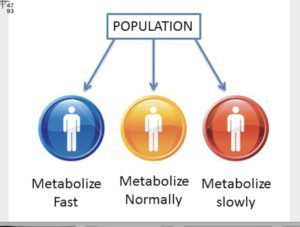
Aside from the known DEPOPULATION trends such social programs to reduce births, abortion legislation, reduced male sperm count via toxic agriculture (50% reduction as early as 1945), the increasing need for in vitro derived pregnancies, iatrogenic deaths, etc, the worldwide establishment is actually “poisoning” all neonates and infants under 3 years old.
The Journal of Pediatric Pharmacology and Therapeutics
“Developmental Pharmacokinetics in Pediatric Populations”
Hong Lu, PhD and Sara Rosenbaum, PhD
*Ped cyp enzymes (see graph) (very important study of the immaturity of cyp 450 superfamilies in infants and children. Synopsis: Infants do not have a mature liver or liver enzyme function such as Cytochrome P450 and its various metabolites until the age of three years old. Hence upwards of 36 vaccine doses by 18 months old containing the above excipients are poisoning the world’s emerging humanity. DOWNLOAD STUDY
CDC vaccine excipients
Failure of Infants to metabolize due to immature Liver Cyp450 system of enzymes until 3 years old.
The Effect Of Heavy Metal on Hepatic Chromosome P450
The results of our experiments have demonstrated that heavy metal ions react with cytochrome P450 dependent enzyme system of fish species leading to changes in confirmation of protein structure they resolve in inhibition of activity of enzymes involved in biotransformation, decrease in detoxifying enzymes. In conclusion the difference changes in enzyme activity and cytochrome P450 content induce by the various heavy metal treatments may also be explained by the living and feeding habits of individual fish species.
Like with all living organism, the body of the fish has a quite conserve protein systems providing molecular defense to insure metabolism and elimination of the foreign material. The main region of metabolism of pollutants entering into the fish body is the liver. Due to biotransformation processes these substances are converted to other compounds that can be eliminated from the body thereby becoming less toxic. The hepatic detoxifying enzymes, the cytochrome P450 dependent mixed function monooxygenases, have an important role in this process. P450 enzyme activity in the body is not constant. Foreign substances, Xenobiotic or some endogenous regulating molecules are able to increase (inducers) or decrease (inhibitors) the activity of cytochrome P450 enzymes.
Aluminum + Cytochrome P450 -Study: Suppressive effect of accumulated aluminum trichloride on the hepatic microsomal cytochrome P450 enzyme system in rats.
Vaccine Excipientsf/CDC Vaccine Excipient Chart
- Which ones need a mature Cyp 450 to metabolize out of the body?
- aluminum hydroxide
- aluminum phosphate
- ammonium sulfate
- amphotericin B
- animal tissues: pig blood, horse blood, rabbit brain,
- dog kidney, monkey kidney,
- chick embryo, chicken egg, duck egg
- calf (bovine) serum
- beta propiolactone
- fetal bovine serum
- formaldehyde
- formalin
- gelatin
- glycerol
- human diploid cells (originating from aborted human fetal tissue)
- hydrolized gelatin
- mercury thimerosal (thiomersal, Merthiolate®)
- monosodium glutamate (MSG)
- neomycin
- neomycin sulfate
- phenol red indicator
- phenoxyethanol
- potassium diphosphate
- potassium monophosphate
- polymyxin B
- polysorbate 20
- polysorbate 80
- porcine (pig) pancreatic hydrolysate of casein
- residual MRC5 proteins
- sorbitol
- squalene
- sucrose
- tri(n)butylphosphate,
- VERO cells, a continuous line of monkey kidney cells, and
VLA Conclusion: Aside from the known DEPOPULATION trends such social programs to reduce births, abortion legislation, reduced male sperm count via toxic agriculture (50% reduction as early as 1945), the increasing need for in vitro derived pregnancies, iatrogenic deaths, etc, the worldwide establishment is actually “poisoning” all neonates and infants under 3 years old.
The Journal of Pediatric Pharmacology and Therapeutics“Developmental Pharmacokinetics in Pediatric Populations” Hong Lu, PhD and Sara Rosenbaum, PhD
*Ped cyp enzymes (see graph) (very important study of the immaturity of cyp 450 superfamilies in infants and children. Synopsis: Infants do not have a mature liver or liver enzyme function such as Cytochrome P450 and its various metabolites until the age of three years old. Hence upwards of 36 vaccine doses by 18 months old containing the above excipients are poisoning the world’s emerging humanity. DOWNLOAD STUDY




